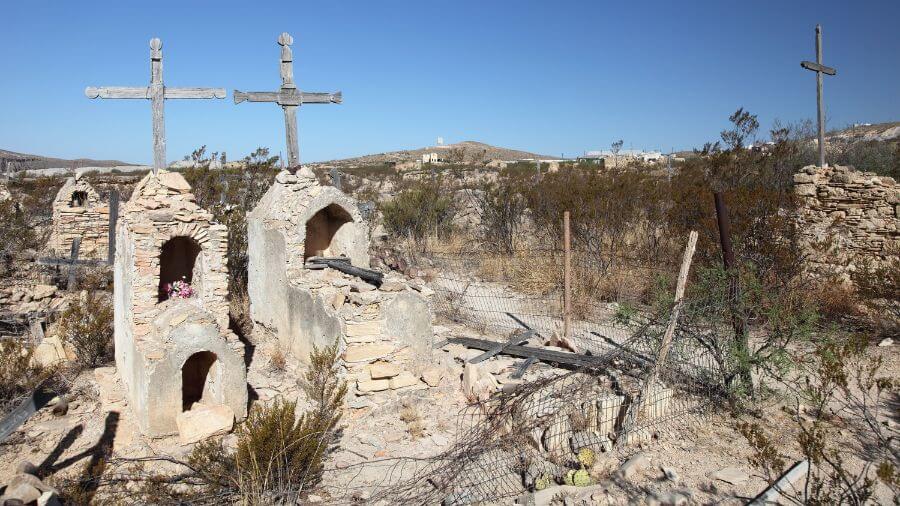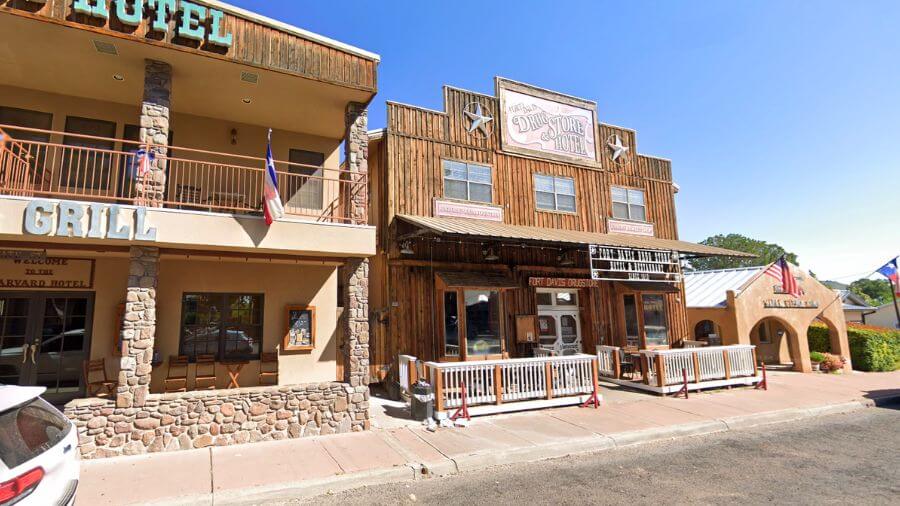Did you know that Texas has more ghost towns than any other state?
Yep, there’s over 500 of them!
Some are well worth a visit whereas others…not so much.
We’ve done all the hard work for you and come up with this ultimate list of the 13 most interesting ghost towns in Texas.
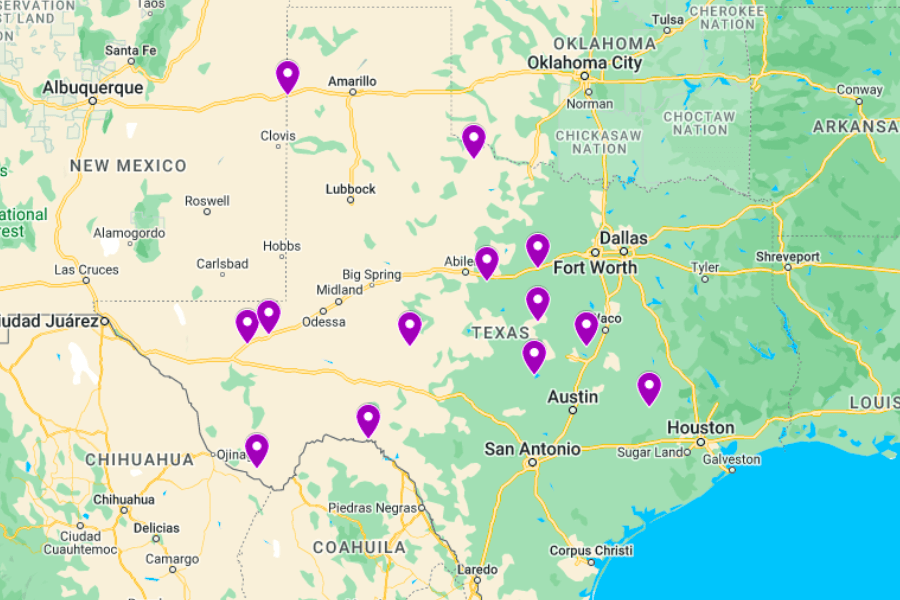
Are you brave enough to explore some of the spookiest places in Texas?
Each abandoned town holds secrets and stories that might just send shivers down your spine.
Read on if you dare to uncover the eerie tales and mysterious ruins that await in these deserted Texas towns!
1. Toyah
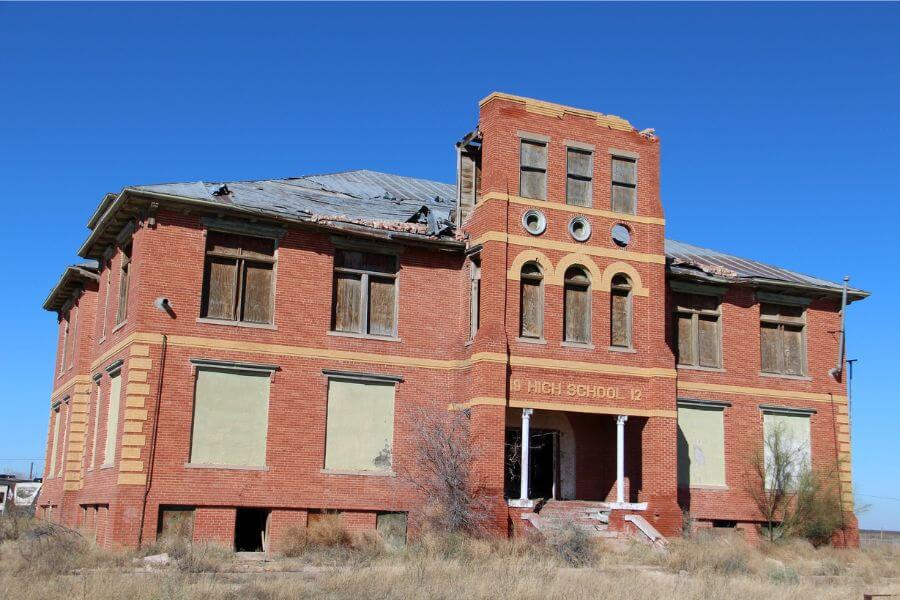
Toyah is a spooky ghost town located in Reeves County, just 21 miles southwest of Pecos.
It started out in the 1880s as a small railroad town and quickly grew as more people moved in to work on the railroad and in the local businesses.
By the early 1900s, Toyah was thriving with its own school, post office, saloons and several stores.
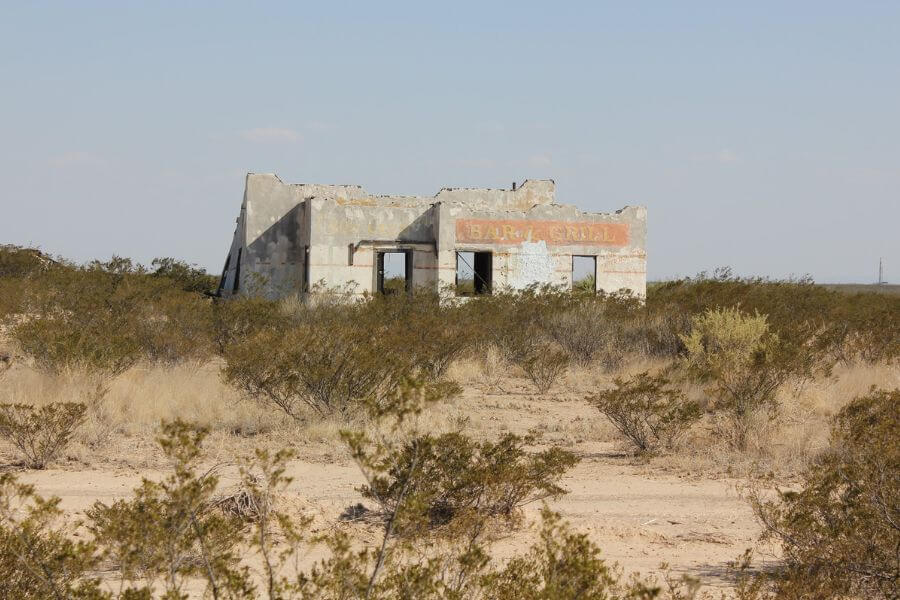
In 1928, even Amelia Earhart landed here in her plane and stayed for 5 days.
However, the town began to decline after the Great Depression and the shifting of major transportation routes away from the area.
Today, visitors to Toyah explore the spooky remnants of the town’s past, including many old, abandoned buildings like the school and some homes that are still standing but in disrepair.
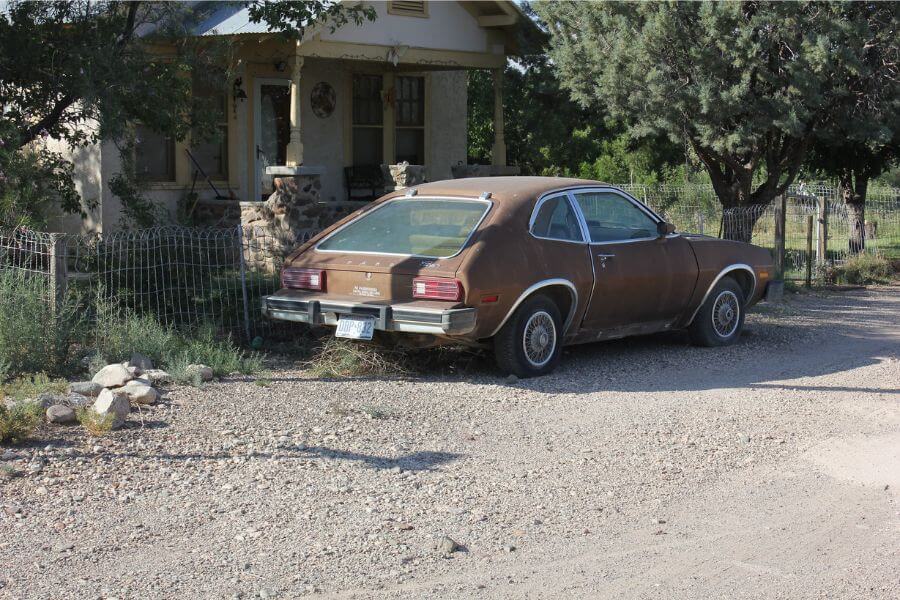
Some people claim the old school building is haunted!
The landscape around Toyah is quite flat and dusty which is typical of West Texas.
One fun fact about Toyah is that it has a unique name that is said to mean “flowing water” in a Native American language which is ironic considering the arid nature of the region.
2. Independence
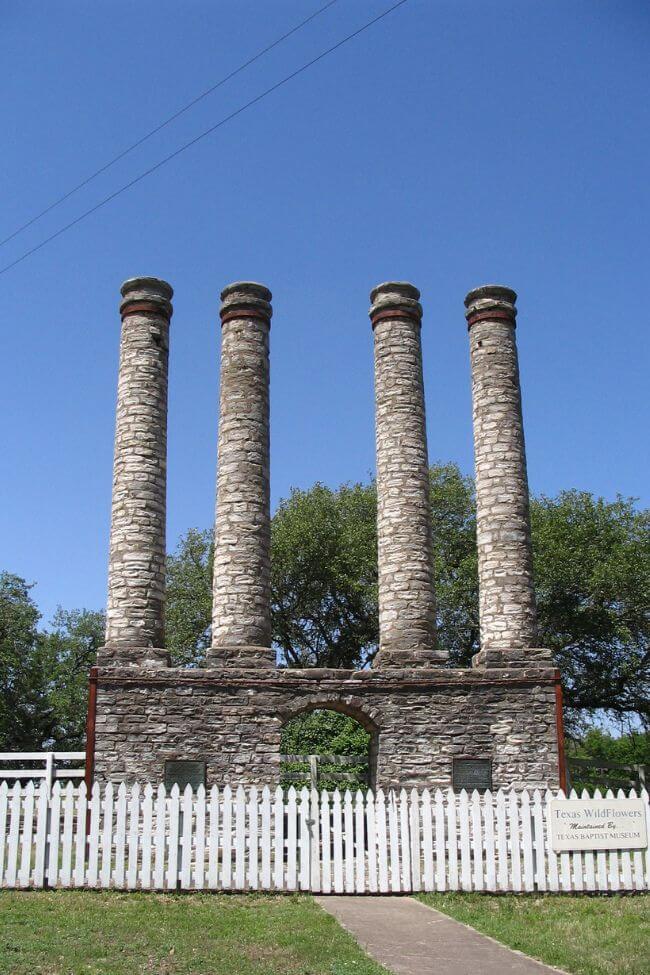
Independence is a ghost town in Washington County, known for its rich history.
It was founded in 1835 and became an important center for education and religion in Texas.
In fact, at the time, it was Texas’ richest community!
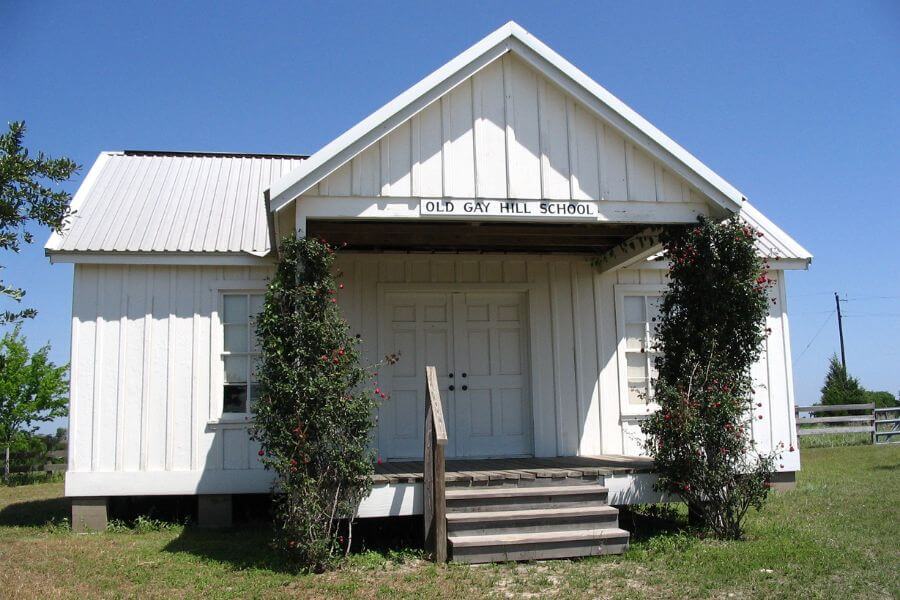
Independence was once the home of Baylor University and Baylor Female College, making it a hub for learning.
However, when most of the railway lines bypassed the town in the 1860s, its growth slowed dramatically.
Then in 1886, Baylor University was moved to Waco which was the final blow for the town.
Today, you can visit Independence to explore the ruins of old buildings and the original site of Baylor University.
You can also see the remnants of old homesteads and a historic church that tell the story of the town’s former life.
A fun fact about Independence is that it was once the home of Sam Houston, a key figure in Texas history, who even sent his children to school here.
3. Terlingua
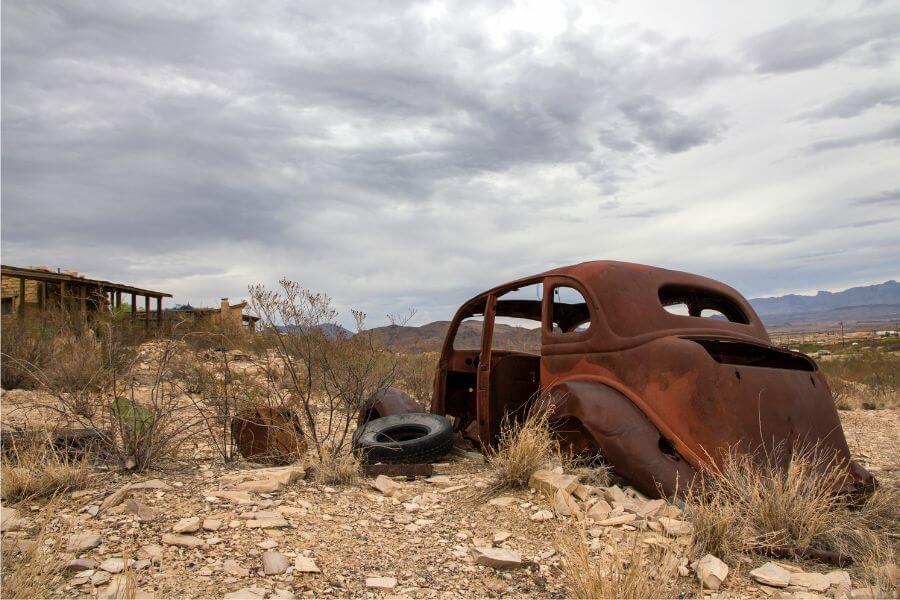
Terlingua is a ghost town located in West Texas, near the Mexican border and Big Bend National Park.
It was originally established in the late 1800s as a mining town, primarily for extracting cinnabar from which mercury is derived.
At its peak, Terlingua was bustling with miners and their families, and the town featured stores and saloons.
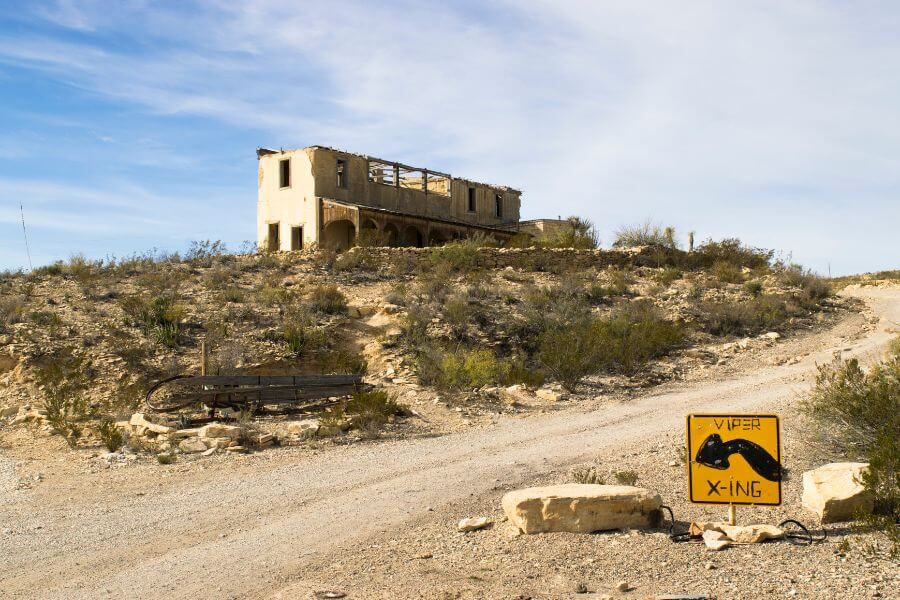
Today, Terlingua is known for its spooky ruins and the stark desert landscape that surrounds it.
You can explore the remains of the old mining operations including rusted equipment and the crumbling structures of miners’ homes.
A particular point of interest is the old Perry Mansion which is thought to be haunted.
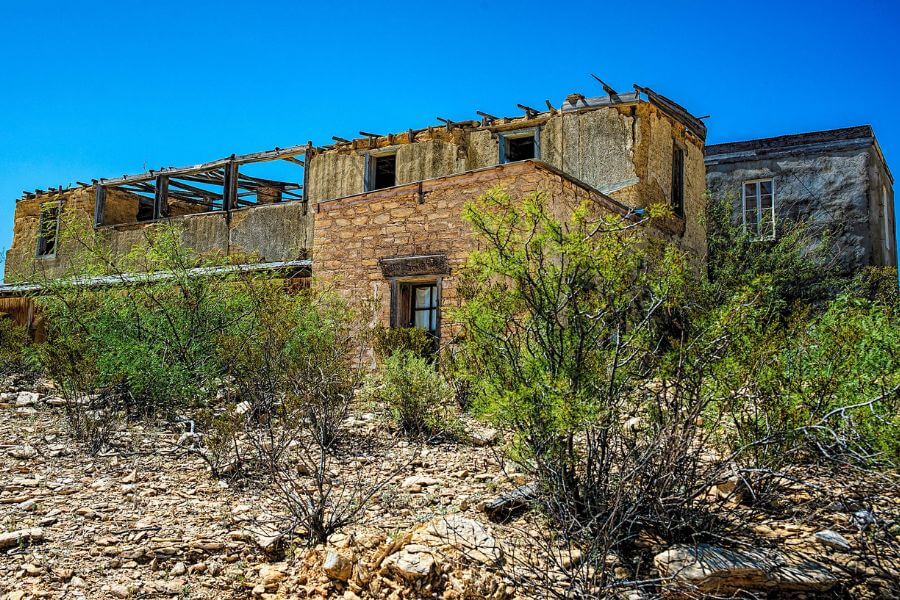
You can actually stay overnight here but only the bravest of people attempt it.
The town also has a historic cemetery with hand-carved wooden crosses marking the graves of former residents. It’s spooky to say the least.
One of the more lively aspects of Terlingua today is its chili cook-off which attracts people from all over the country every November.
4. Barstow
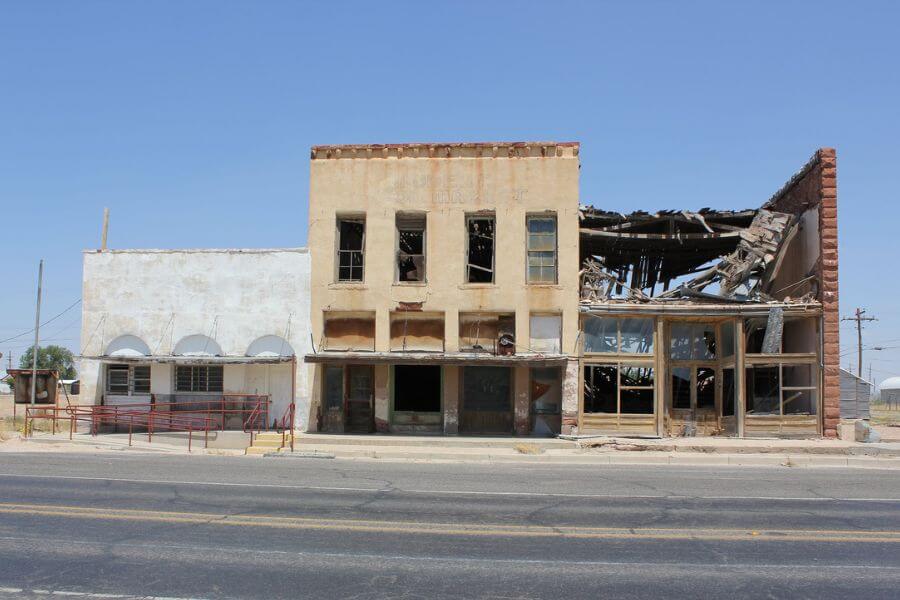
Barstow is a ghost town located in Ward County and is arguably the spookiest town on this list.
It was founded in the 1880s when irrigation from the nearby Pecos River allowed the area to become a hub for agriculture, especially for growing fruits like grapes.
At one point, Barstow was famous for its vineyards and even won awards for its wine at the St. Louis World’s Fair in 1904.
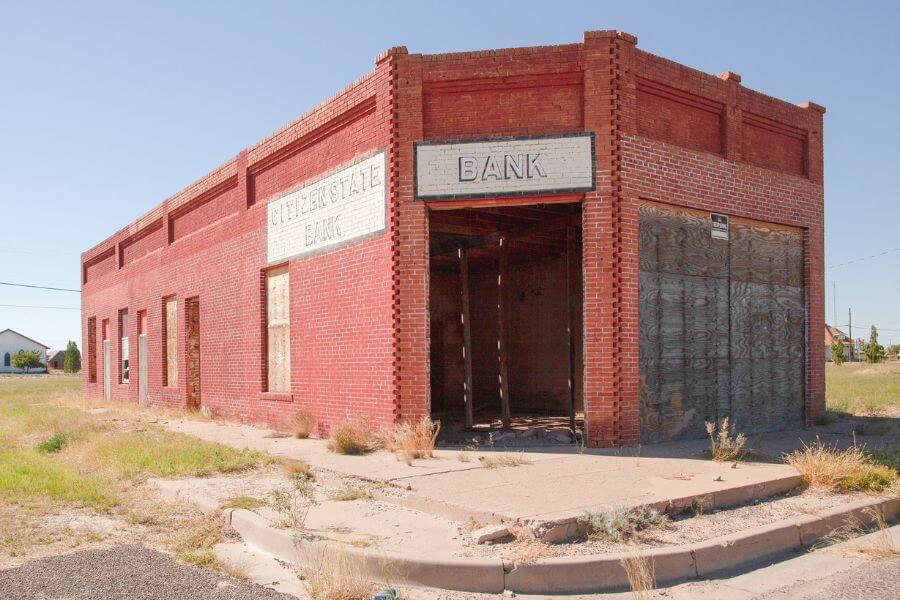
However, changing agricultural practices and a series of droughts led to the town’s decline in the early 20th century.
Today, visitors to Barstow can see the remnants of its past, including some old crumbling buildings like the ruins of homes and businesses that look like they’re from a horror movie.
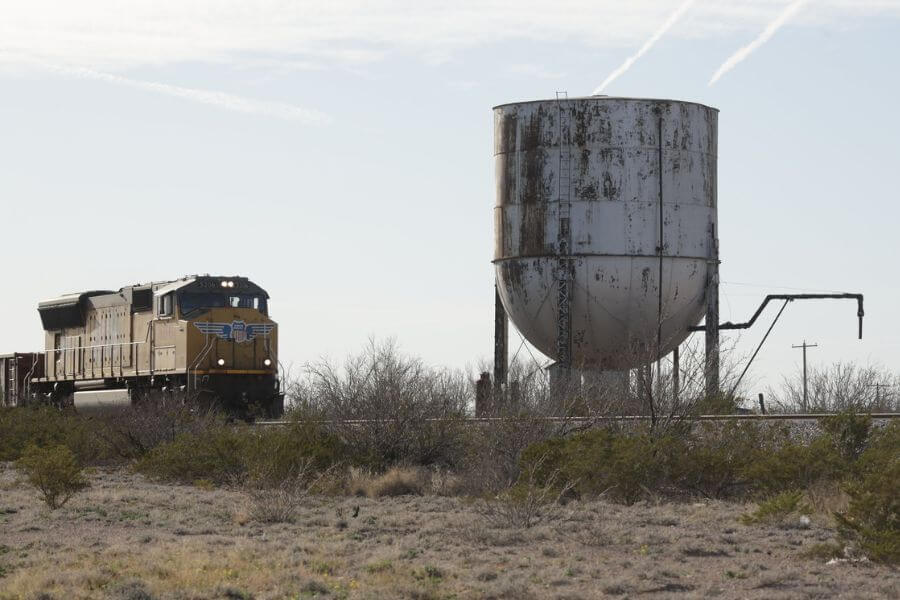
The town is said to be haunted with people claiming they’ve seen spooky figures floating around the town whose feet never touch the ground.
The landscape is typical of West Texas with wide-open spaces and a quiet, deserted feeling that is a little bit spooky.
5. Sherwood
Sherwood is a ghost town located in Irion County, just 27 miles southwest of San Angelo, although some people do still live there.
It was founded in the late 19th century and became the first county seat in 1889.
The town flourished for a while and mainly served the local ranching community.
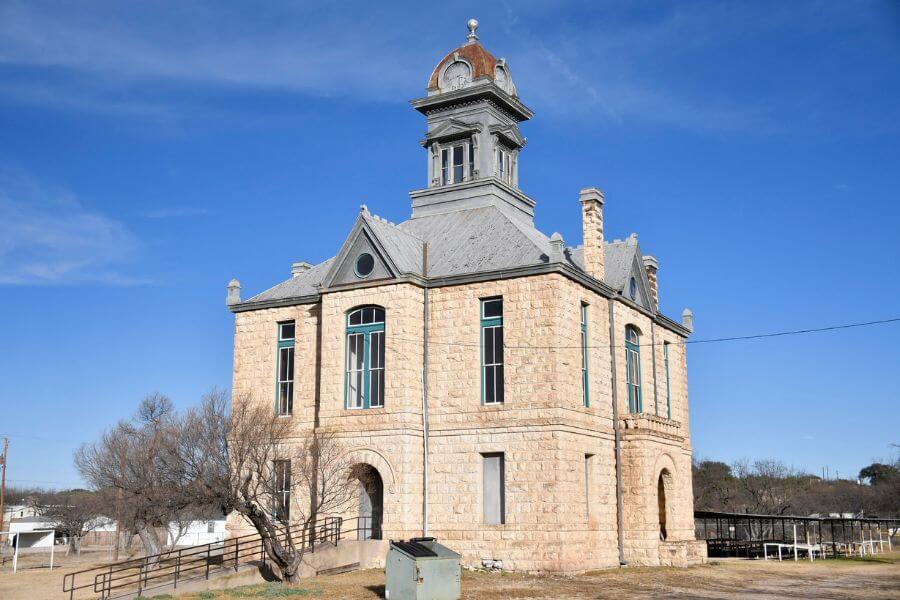
It had a courthouse, jail, post office, school and several businesses that catered to the needs of its residents.
However, when the new railroad bypassed the town and the county seat was moved to Mertzon in 1939, Sherwood began to decline.
Today, if you visit Sherwood, you can explore the old courthouse which still stands magnificently in the center of the town.
6. The Grove
The Grove is a ghost town located in Coryell County, just 35 miles southwest of Waco.
It began as a small farming community in the 1850s and grew when it became a stop on the stagecoach route.
The town had a post office, a cotton gin, a blacksmith, a school as well as several stores and it served as a bustling center for local farmers and travelers.
In fact, by the year 1900 it was one of the most prosperous towns in Texas.
However, when new highways and railroads were built that bypassed The Grove in the 1940s, the town’s importance declined and residents moved away to find work elsewhere.
Today, visitors to The Grove can see well-preserved buildings like the old saloon and general store that still look like they did decades ago.
Interestingly, The Grove was purchased by a single owner in the 1970s who restored many of the historic buildings.
7. Old Bluffton
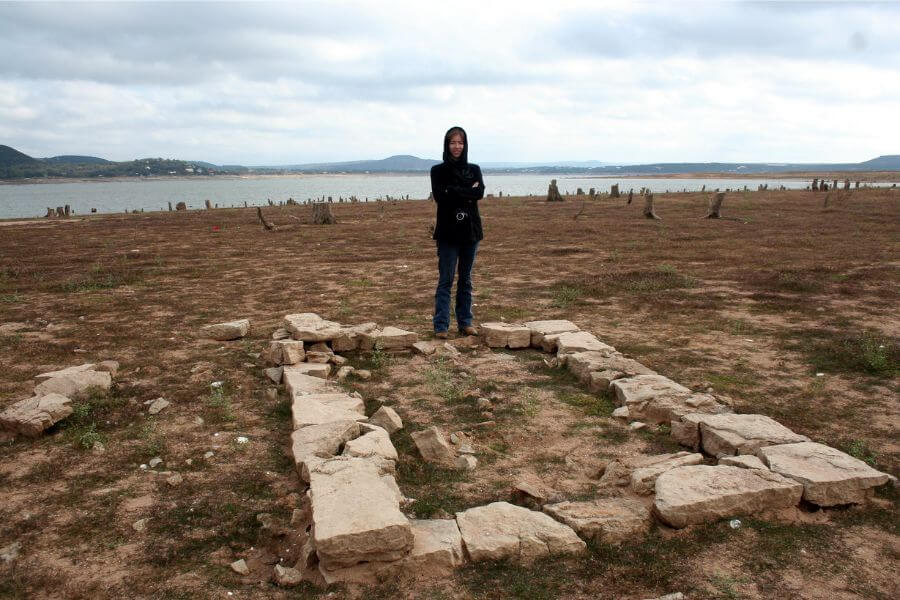
Old Bluffton is a unique underwater ghost town located in Llano County, just 22 miles west of Burnet.
It was originally founded in 1852 near the Colorado River and became a small but thriving community.
The town had homes, businesses and a town square which served as a gathering place for locals.
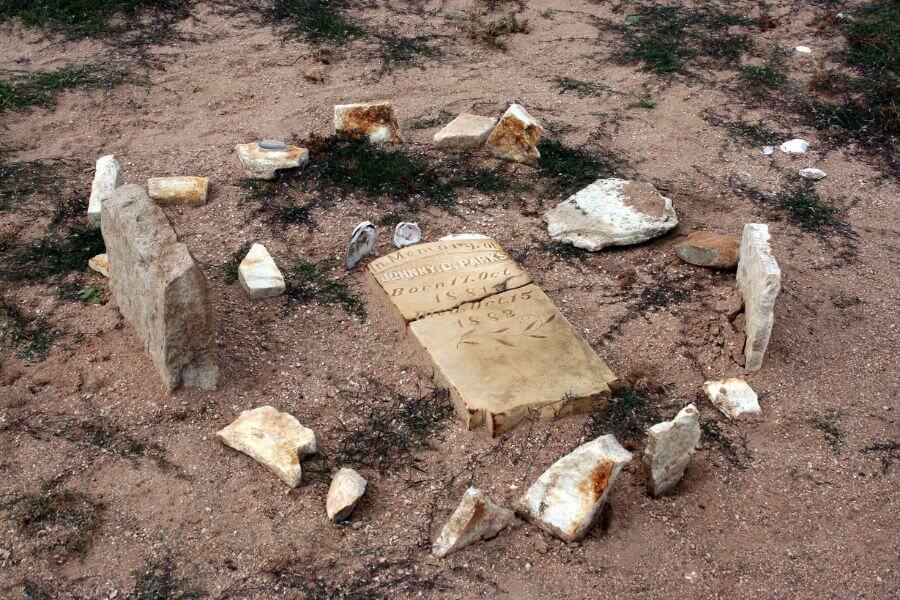
In fact, it was actually one of the first towns in the Texas Hill Country!
In the 1930s, Old Bluffton’s fate changed dramatically when the construction of the Buchanan Dam led to the creation of Lake Buchanan.
The rising waters of the new lake forced the residents to relocate and the original townsite was submerged underwater.
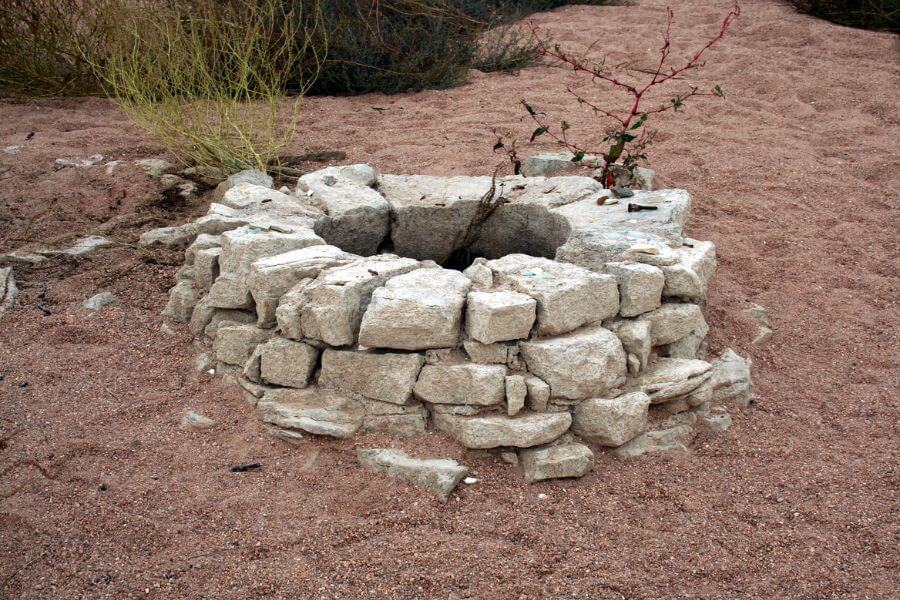
Today, during periods of drought, the water level in Lake Buchanan drops and the remains of Old Bluffton reemerge.
You can often see tombstones as well as the remains of a cotton gin, a bank and a hotel.
Visitors to the area can sometimes walk among the ruins, getting a rare glimpse of a town frozen in time beneath the lake.
8. Indian Gap
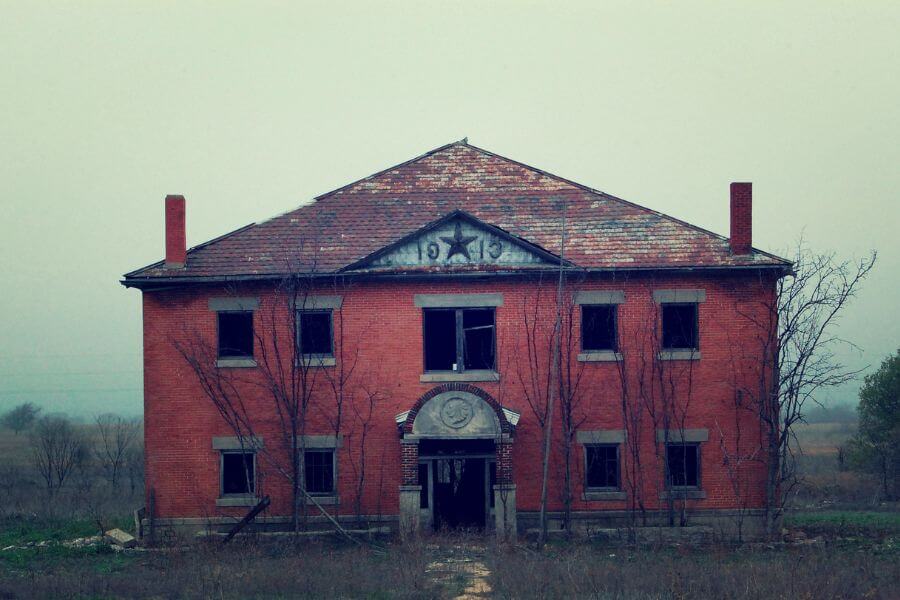
Indian Gap is a ghost town located in Hamilton County in Central Texas.
The town was named for the nearby pass through the hills which was often used by Native American tribes.
Settled in the 1850s, Indian Gap grew as a farming and ranching community with its residents dedicated to cultivating the land and raising livestock.
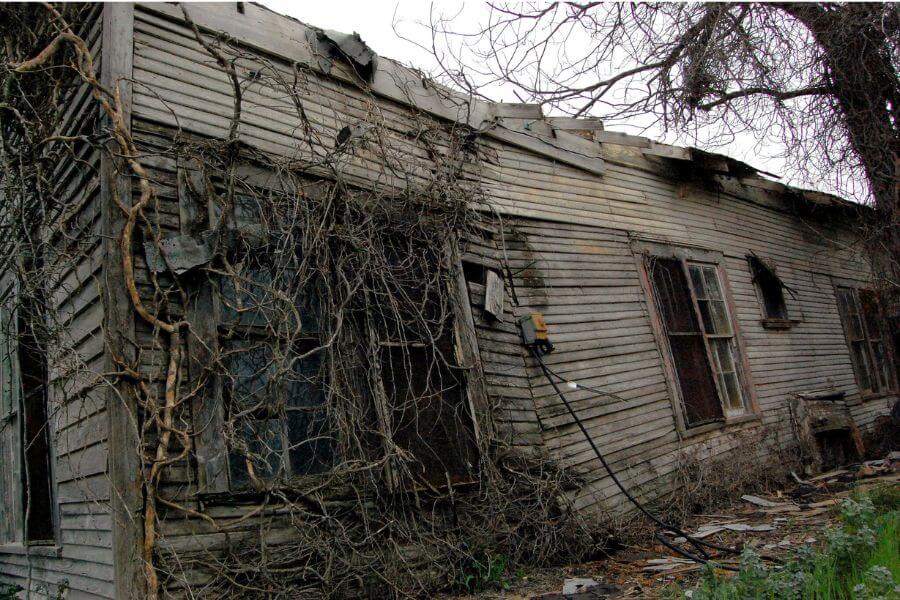
As the years passed and transportation methods evolved, Indian Gap’s population began to dwindle.
Today, the town is an eerie reminder of the past and features a few enduring structures like an old general store and the church.
The only sign of life is the horses and longhorns that roam the former town.
You’ll also be able to enjoy scenic views of the surrounding countryside which remains largely agricultural.
A fun fact about the town is that it still hosts an annual reunion for former residents and their descendants which keeps the spirit and memories of Indian Gap alive.
9. Thurber
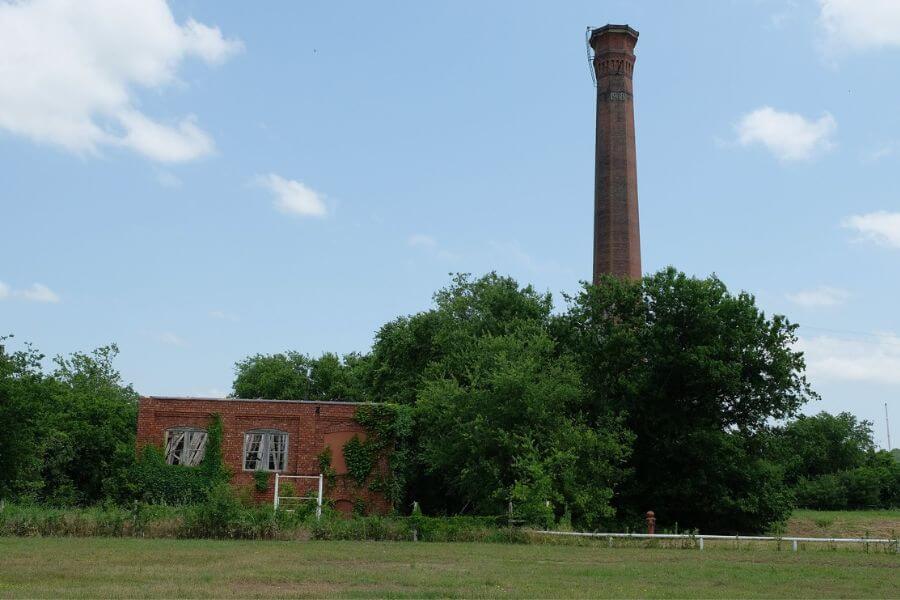
Thurber is a ghost town located in Erath County, about 75 miles west of Fort Worth.
Founded in the late 19th century, Thurber became a booming mining town, primarily for coal and later for oil, which powered Texas’s industrial growth.
At its peak, Thurber had over 10,000 residents and the town was one of the largest producers of coal in Texas.
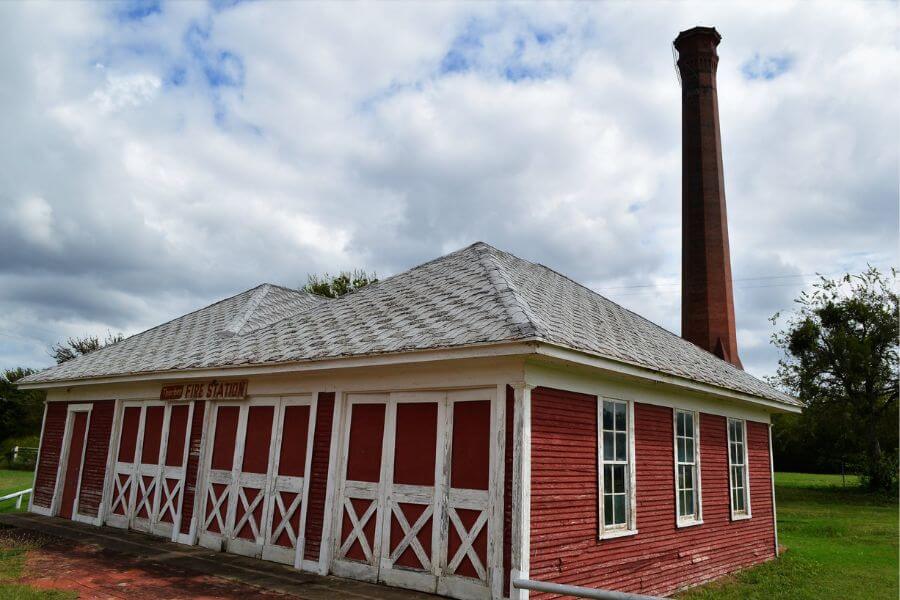
It had many churches, schools, parks, a library and even a 200-room hotel and an opera house!
However, as the use of coal declined and oil became more prominent, Thurber’s mines began to close and the population dwindled.
Today, visitors to Thurber can explore the spooky remains of this once bustling town. Some even say it’s haunted.
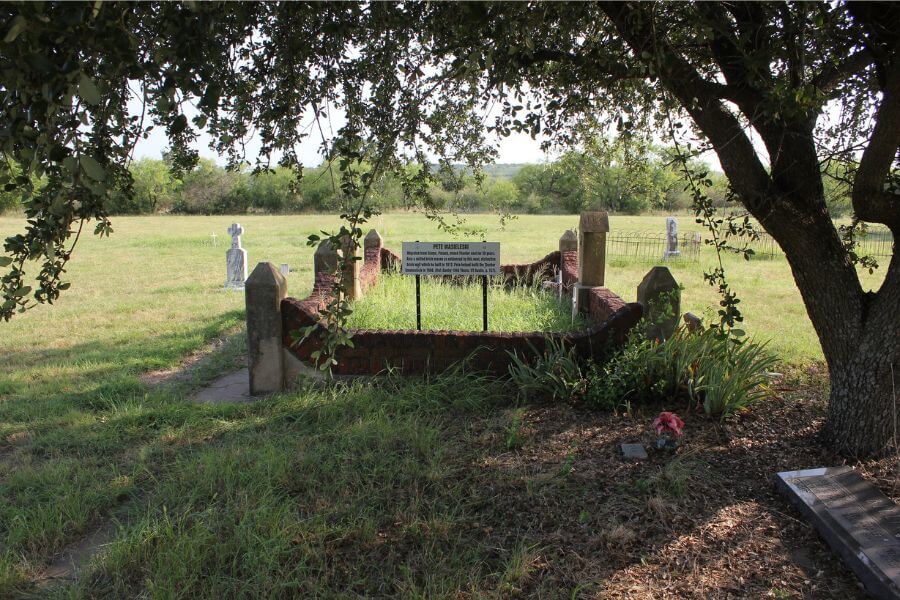
Key sights include the old smokestack, which is visible for miles and stands as a monument to Thurber’s industrial past.
You’ll also be able to see the remains of some brick buildings that were part of the original town structure.
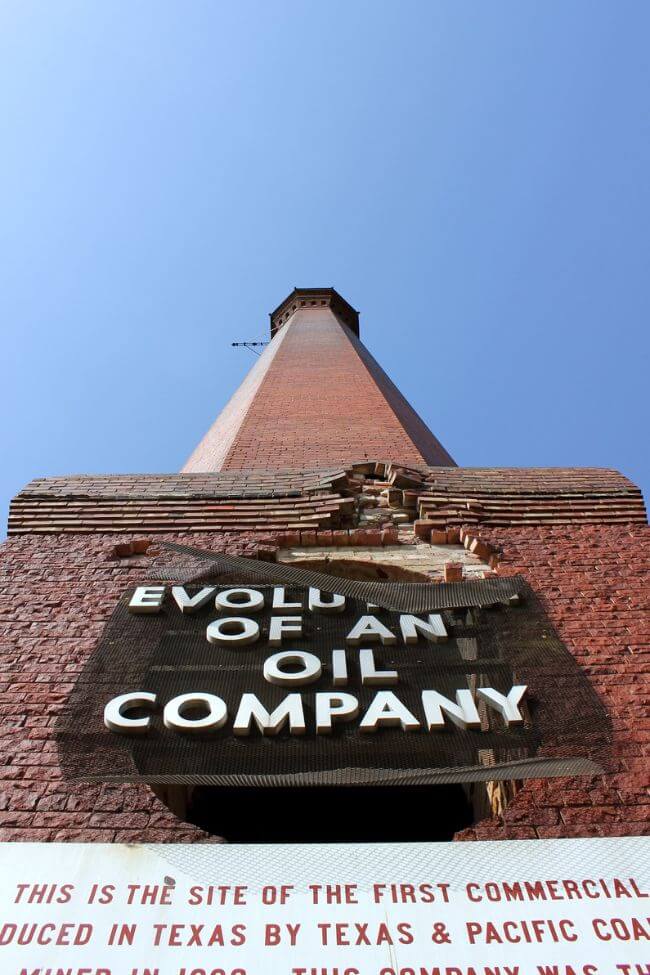
Thurber even has a museum dedicated to its history where you can learn about the town’s unique past and see artifacts from its heyday.
Interestingly, Thurber was once almost entirely run by the company that owned the mines, which controlled everything from housing to stores, making it a classic example of a “company town.”
10. Belle Plain
Belle Plain is a ghost town located in Callahan County, near the modern town of Baird.
Founded in 1876, Belle Plain was established during a time when settlers were moving westward, looking for new opportunities.
It quickly became a thriving community and was even the original county seat of Callahan County.
At its height, Belle Plain had a college, a courthouse, many businesses and even a jail.
However, when the Texas and Pacific Railway was built through nearby Baird instead of Belle Plain in the 1880s, the town began to decline.
Residents began to move to more prosperous areas and by the early 20th century, Belle Plain was largely abandoned.
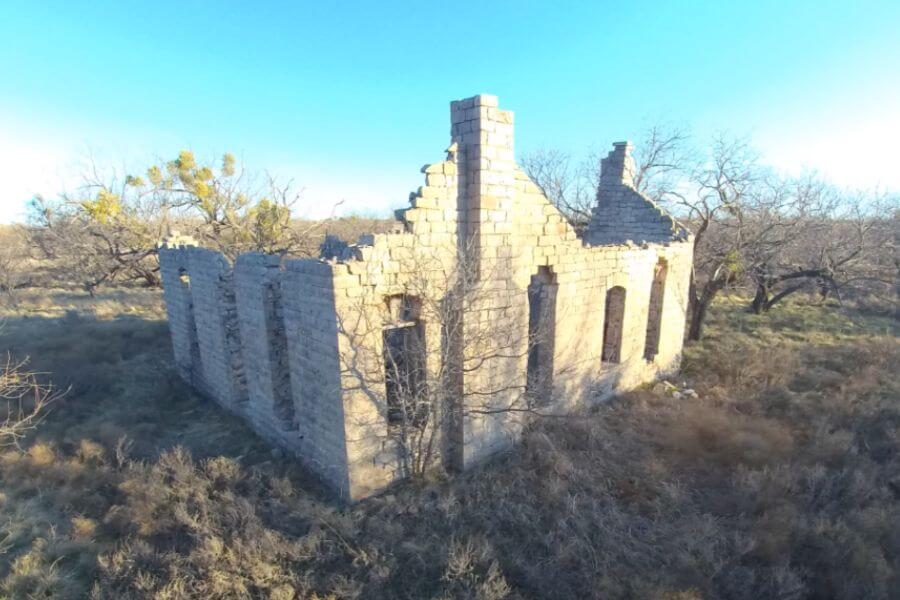
Today, what remains of Belle Plain are a few old foundations and a cemetery, which some say is haunted.
During its brief period of prosperity, Belle Plain was considered one of the most important educational centers in the region!
It even had one of the first institutions of higher learning west of Fort Worth.
11. Langtry
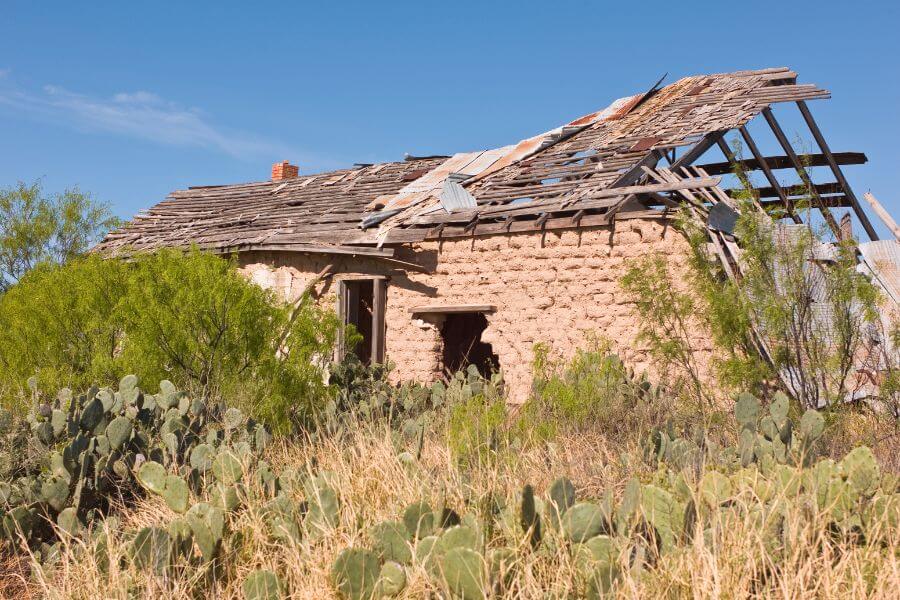
Langtry is a ghost town located in Val Verde County, right near the border with Mexico.
The town was originally established in the 1880s when the railroad was being built through the area.
Langtry was named after George Langtry who was an engineer and foreman who helped build the railroad.
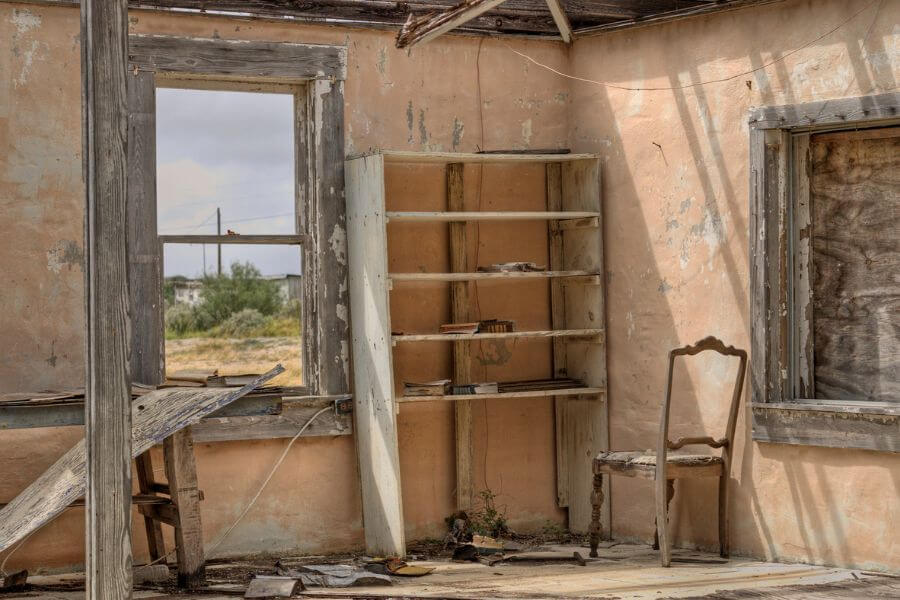
Although the town is famously associated with Judge Roy Bean, known as “The Law West of the Pecos.”
Judge Bean made Langtry famous by holding court in his saloon, deciding cases in his own unique and often controversial way.
In the 1900s, the population started to dwindle as the highway was moved further north.

The town itself is pretty eerie with its empty streets and decaying buildings that are falling apart and being overgrown by plants.
The only well-preserved building is the Judge Roy Bean Visitor Center which includes the original saloon, his courtroom and a museum showcasing artifacts from the time period.
12. Medicine Mound
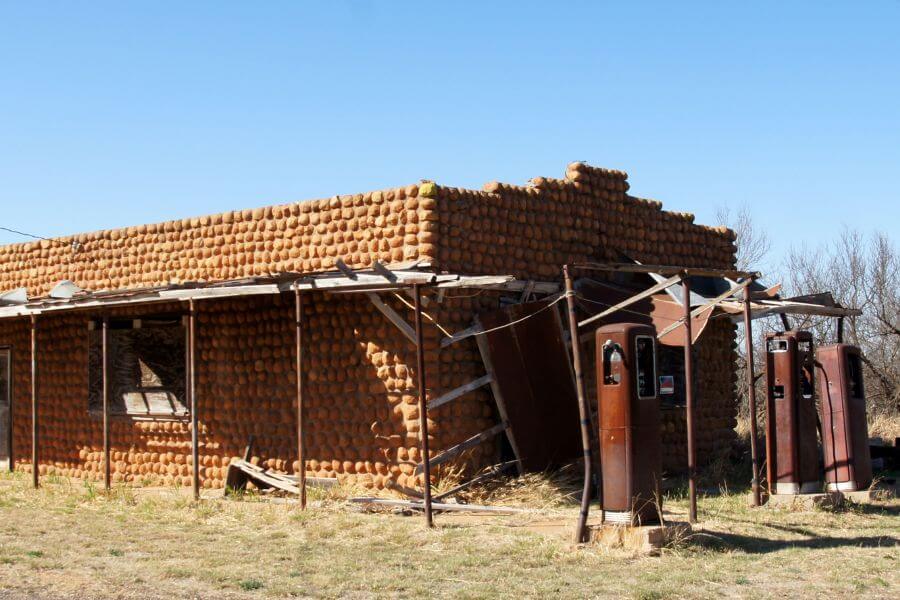
Medicine Mound is a ghost town located in Hardeman County, near to the Oklahoma border.
It was named after the nearby hills that were sacred to local Native American tribes.
The town was established in the 1920s, primarily as a farming community.
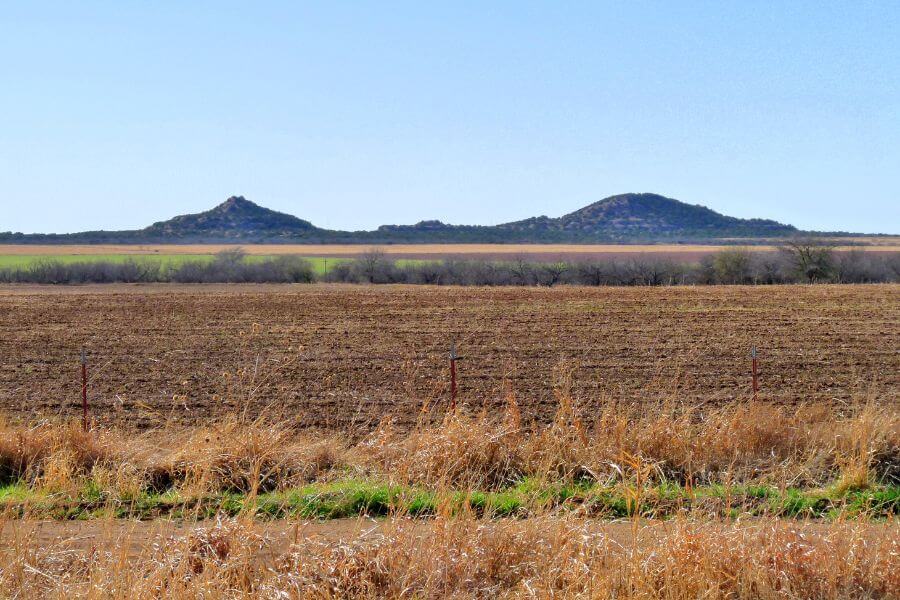
During its heyday, Medicine Mound had a few stores, a gas station and a cotton gin which served the needs of local farmers and their families.
However, the town began to decline after the Great Depression and a devastating fire in the 1930s that destroyed much of the town.
Today, visitors to Medicine Mound can see the eerie remnants of the town’s past through the ruins of some old buildings and a museum that was set up by a former resident.
The museum, housed in one of the last standing structures, contains artifacts and photographs that tell the story of the town and its people.
This small town, though mostly forgotten, still holds a significant place in the hearts of those connected to it.
13. Glenrio
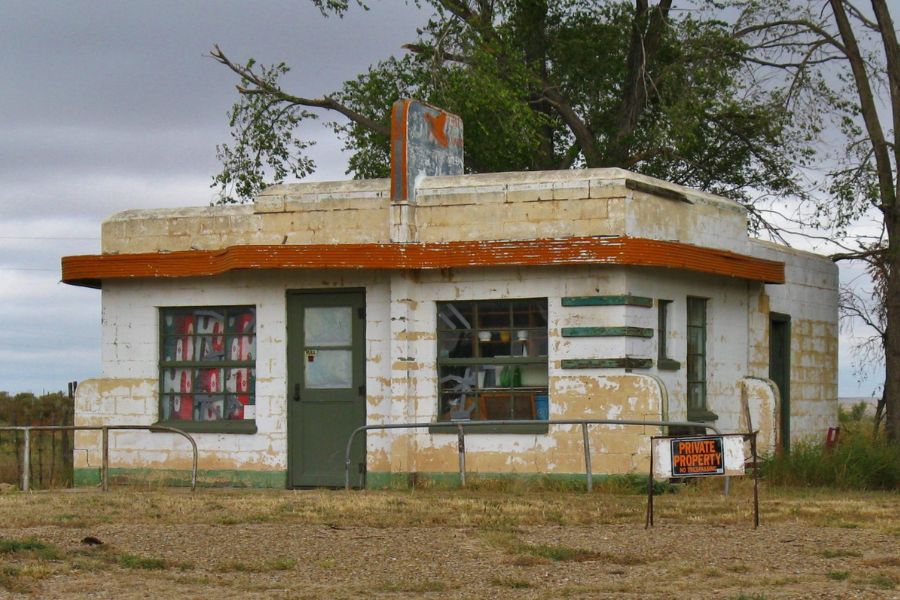
Glenrio is a ghost town located right on the border between Texas and New Mexico.
It was once a bustling stop on the famous Route 66 and welcomed travelers as they entered Texas from the west.
Established in the early 1900s, Glenrio was a popular spot for gas stations, motels and diners that served the needs of road trippers for many decades.
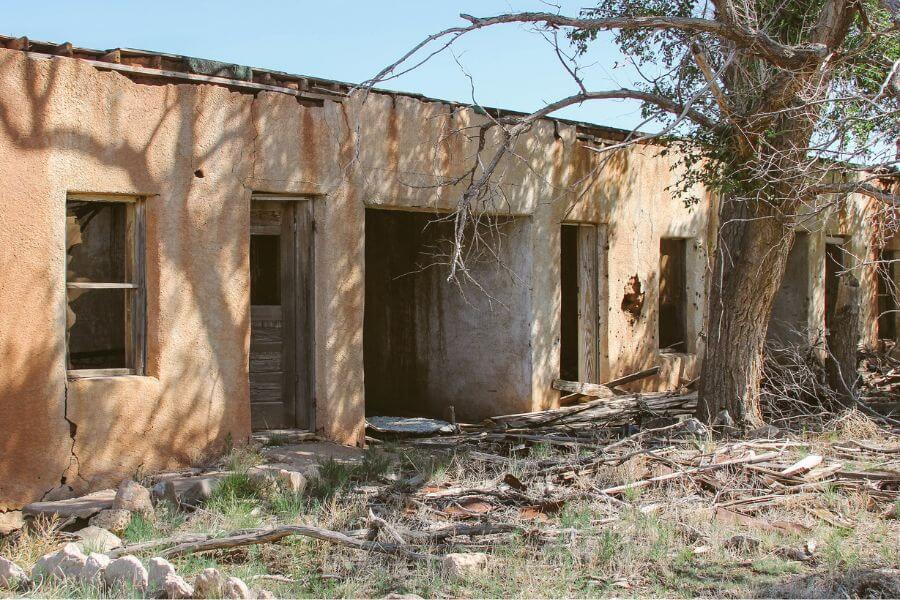
Unfortunately in 1975, Interstate 40 bypassed the town which led to its downfall.
Today, Glenrio stands mostly abandoned but does offer a glimpse into the past for visitors.
You can see the eerie old buildings, including a gas station and a diner, which are now quiet and empty but still look like they did in the mid-20th century.
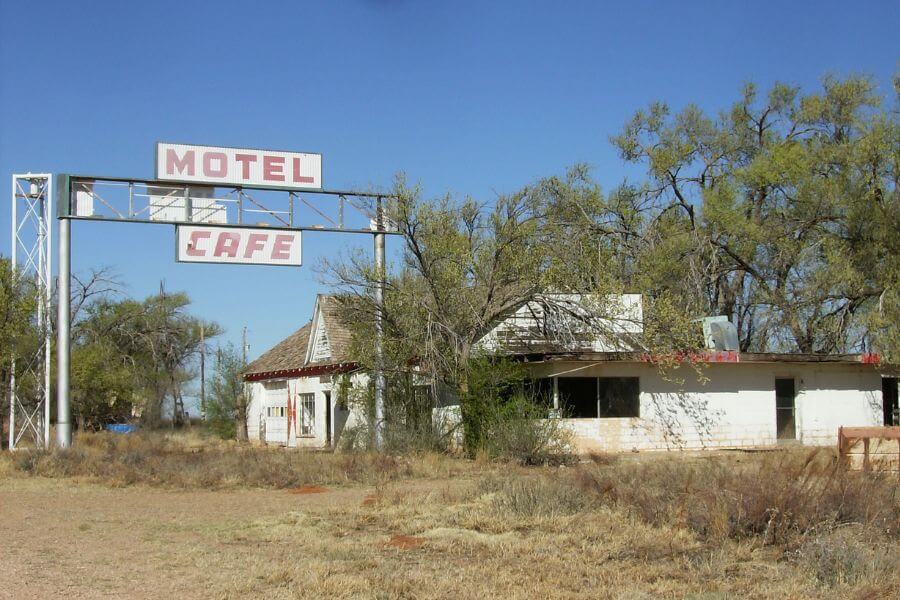
The landscape around Glenrio is a mix of flat plains and rolling hills which is typical of the area where the Texas Panhandle meets New Mexico.
A fun fact about Glenrio is that it was featured in the movie “The Grapes of Wrath” as a symbol of the American journey west during the Great Depression.
Related Posts

